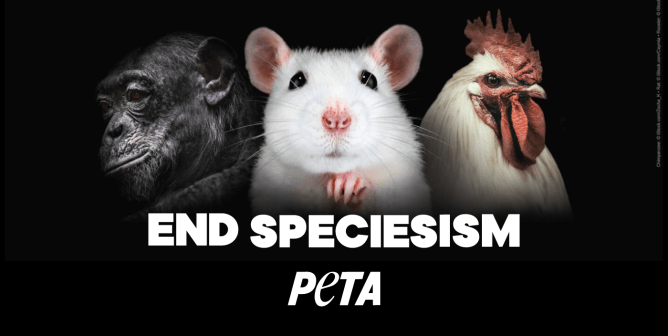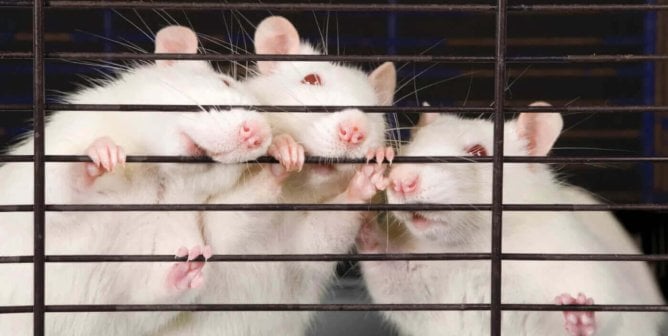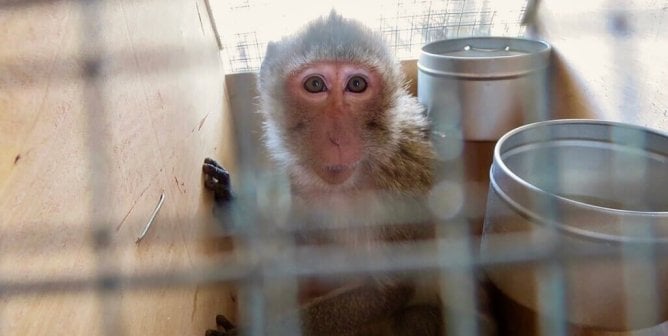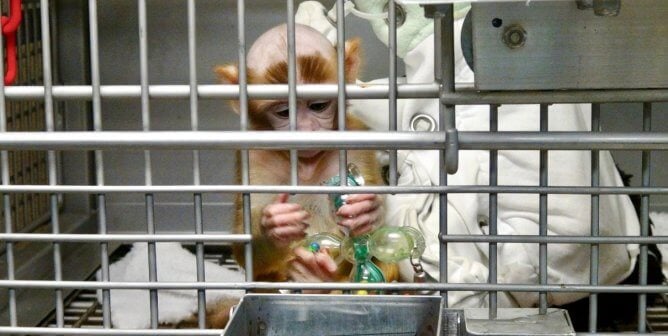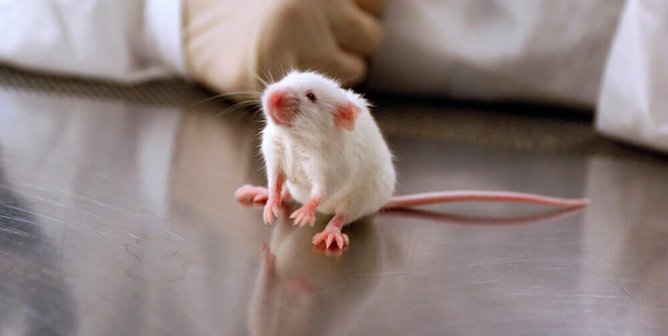Screens and Tests
The EPA’s Endocrine Disrupter Screening Program (EDSP) is organized into two tiers: Tier 1 screening tests (the Tier 1 battery) are intended to detect chemicals with the potential to interact with the estrogen, androgen, or thyroid hormone systems, and Tier 2 tests are intended to determine whether such interactions result in adverse effects. This page provides information on the animal tests included in both tiers.
Tier 1 Animal Tests
- Uterotrophic: Approximately 18 female rats are killed for each uterotrophic test. Developed in the 1930s, this test attempts to predict a chemical’s potential to disrupt estrogen activity in humans and involves weighing components of the rats’ reproductive tracts after the animals have been exposed to a chemical. A study of results for 70 chemicals tested in more than one uterotrophic test showed that 26% of those chemicals were classified as both active and inactive.1
- Hershberger: Approximately 54 male rats are killed for each Hershberger test. Developed in the 1930s, this test attempts to predict a chemical’s potential to disrupt androgenic activity in humans and involves weighing components of the rats’ reproductive tracts after the animals have been exposed to a chemical. A study of results for 25 chemicals tested in more than one Hershberger test showed that 28% of those chemicals were classified as both active and inactive.2
- Pubertal Female: At least 45 female, newly weaned rats are killed for each chemical tested. The pubertal female test assesses the age at which female rats reach “puberty” according to when their vaginal opening appears, and deviations from the norm (two weeks after weaning) are considered a possible sign of endocrine disruption for humans. Female rats who have not yet been weaned are force-fed a test chemical for 21 days, and the average age at vaginal opening is determined. Then they’re killed, and their thyroid glands and ovaries are removed for further study.
- Pubertal Male: At least 45 male, newly weaned rats are killed for each chemical tested. The pubertal male test assesses the age at which male rats reach “puberty,” and abnormalities associated with sex organs and secondary sexual characteristics are considered a possible sign of endocrine disruption in humans. Male rats who have not yet been weaned are force-fed a test chemical daily for one month, after which they’re killed. Their reproductive and thyroid tissues are removed and examined, and blood is collected for hormone analysis.
- Amphibian Metamorphosis: At least 320 tadpoles and frogs are killed in this study for each chemical tested. As frogs mature, they undergo a metamorphosis from their larval (tadpole) stage to adulthood, during which time their tails gradually disappear and are absorbed back into the body (resorption). Over a two-week period, a chemical is pumped into the water of the tanks holding the tadpoles and the rate of tail resorption is measured as an indication of thyroid activity in the frog.
- Fish Reproduction Screen: At least 96 fish and their offspring are killed per chemical tested. The fish reproduction screen test is intended to examine abnormalities associated with survival, behavior, secondary sex characteristics, and fecundity (i.e., the daily number of eggs released per female). A chemical is pumped into the water of the tanks holding the fish, who are later killed and their bodies examined.
Tier 2 Animal Tests
- Larval Amphibian Growth and Development Assay: At least 320 frogs are killed in each experiment. This long-term test, which requires approximately four months to complete, intends to assess growth and developmental effects in frog populations. The frogs are exposed to a chemical and evaluated for poor health (mortality, abnormal behavior, and growth determinations) as well as hormonal effects.
- Avian Multigeneration: Approximately 2,255 birds are killed for each chemical tested. This multigeneration reproduction study using mallard ducks, bobwhite quail, or Japanese quail intends to assess potential adverse effects of chemicals on bird populations. Across three generations, birds are monitored for signs of compromised health, food consumption patterns, and bodyweight. The timing of sexual maturation and the development of different sex-specific traits are also observed as signs of potential endocrinal and developmental effects.
- Medaka Extended One-Generation Reproduction Test (MEOGRT): Several thousand fish are killed for each chemical tested. The MEOGRT uses the medaka, a small freshwater fish, to assess adverse reproductive and developmental effects across two-and-a-half consecutive generations.
- Reproduction and Fertility Effects in Rats or Extended One-Generation Reproduction Tests (EOGRT) in Rats: More than 1,000 rats are killed for each chemical tested. This test characterizes adverse effects on rat reproduction and development in an attempt to predict human outcomes. Sexual maturity, the estrous cycle, sperm concentration, ovarian effects, pup births and survival rates, pup development, thyroid gland tissue effects, and hormone levels are among the effects assessed. An evaluation conducted by the European Chemicals Agency found high variability in many of these effects.
References
1Kleinstreuer NC, Ceger PC, Allen DG et al. A curated database of rodent uterotrophic bioactivity. Environ Health Perspect. 2016;124(5):556-562.
2Browne P, Kleinstreuer NC, Ceger P et al. Development of a curated Hershberger database. Reprod Toxicol. 2018;81:259-271.

